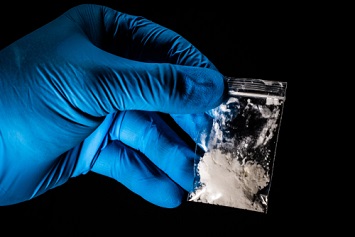At the beginning of a video released by the National Institute for Occupational Safety and Health (NIOSH), a police officer is exposed to fentanyl and experiences symptoms of an overdose. The video serves to highlight the risks to first responders who may be exposed to fentanyl on the job, along with recommendations to stay safe during such incidents.
The video, Illicit Drugs, Including Fentanyl: Preventing Occupational Exposure to Emergency Responders, opens with real-life footage from a body camera worn by a Blacksburg, Virginia, police officer responding to an overdose call.
A few minutes into the video, a fellow officer becomes visibly distressed. He starts to have difficulty breathing. Soon the officer can no longer stand; finally, the officer wearing the body camera administers Narcan® (naloxone) to counteract an overdose.
What Went Wrong?
NIOSH investigated and produced a Health Hazard Evaluation (HHE) of the incident where several police officers suffered exposure to opioids. The video and the HHE examined how the exposure occurred.
On April 26, 2018, three police officers responded to a 911 call about a person with a possible drug overdose in a hotel room. Upon entering the hotel room, the officers saw drug paraphernalia and powder that appeared to be illicit drugs. Laboratory testing later revealed opioids, cocaine, methamphetamine, and cathinones (“bath salts”) were in the hotel room.
NIOSH concluded the potential routes of exposure to opioids were inhalation and touching the eyes, nose, or mouth. The officers wore short-sleeved uniforms, gloves, and half-face piece respirators with P100 filters.
However, the officers incorrectly donned their respiratory protection. The glasses, police radio earbuds, cameras, and hats the officers wore prevented a secure respirator seal.
NIOSH Recommendations
NIOSH has specific recommendations for incidents like the one in Blacksburg, Virginia:
- Do not touch the eyes, mouth, and nose after touching any surface potentially contaminated with fentanyl.
- Avoid performing tasks or operations that may make fentanyl airborne.
- Wash hands with soap and water (or just water) immediately after a potential exposure and after leaving a scene where fentanyl is known or suspected to be present.
- Do not use hand sanitizers or bleach solutions to clean contaminated skin (bleach and hand sanitizers can enhance absorption of opioids).
- Decontaminate equipment by wiping it down with soap and water (or just water), following manufacturer’s recommendations as appropriate, but do not use bleach solutions to clean contaminated equipment.
- Wear nitrile gloves when illicit drugs are suspected to be present.
Officers should be trained to change or remove gloves after completing tasks that involve potential contamination with illicit drugs and must know how to remove gloves safely.
What Should Police Departments Do?
Opioid exposure is an increasingly common hazard for all first responders—emergency medical technicians, firefighters, and police officers. NIOSH has additional recommendations for police department policies and training practices, including:
- Providing officers responding to illicit drug incidents with personal protective equipment (PPE) that can be easily disposed of or cleaned (departments may have similar equipment and procedures for crime scenes where there is blood or other bodily fluids);
- Training officers on proper respirator use along with equipment, such as duty belts, body cameras, and radios;
- Training them on the timing for putting on PPE in unsecured or unsafe conditions when illicit drugs might be present;
- Training them on how to maintain clear and effective communication, particularly over radios or similar devices, while wearing PPE; and
- Instituting procedures for changing gloves and disposing of used gloves after performing tasks with potential for contamination, such as handling illicit drugs and handcuffing subjects who might have recently handled them.
Quickly Assessing Hazards, Exposures
Emergency responders must quickly assess hazards and determine the level of exposure when arriving on the scene of an incident. There are three levels of exposure:
- Minimal—where it is suspected fentanyl may be present, but no fentanyl products are visible;
- Moderate—where small amounts of fentanyl products are visible; and
- High—where liquid fentanyl or large amounts of fentanyl products are visible, such as in a fentanyl storage or distribution facility, milling operation, or production laboratory.
NIOSH recommends wearing nitrile gloves where exposure is minimal and long-sleeved uniforms, nitrile gloves, and eye and respiratory protection where exposure is moderate. NIOSH also recommends that police officers and other first responders not enter locations where exposure is high. Chemical hazard protective gear is needed at scenes where there is a high exposure hazard.

